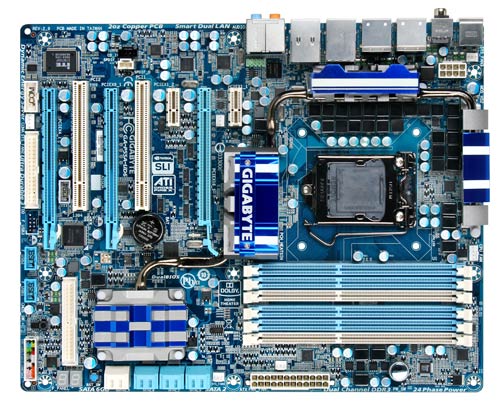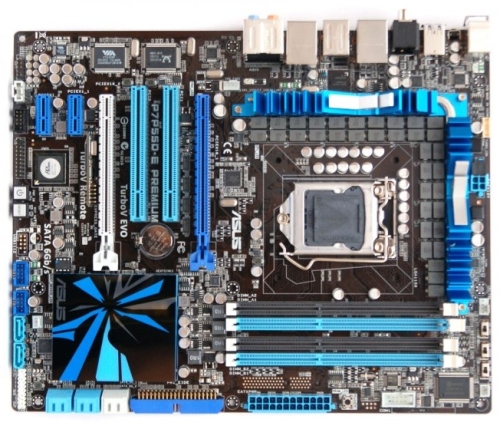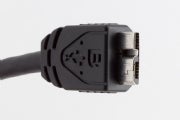Windows 7 may be brand spanking new, but that doesn't mean you can't find free or cheap tools to tweak its settings, add features, or smooth an upgrade from XP or Vista.We've compiled a list of ten valuable software tools -- many of them free -- that can make your Win7 experience a lot more rewarding.
(Click on each of the images for a closer look at the tool.)
Microsoft Security Essentials
 Windows 7, like its predecessors, doesn't provide built-in protection against malware such as viruses and spyware. (It does have a firewall, however.) You could pay McAfee or Symantec for this service, but why bother with their protection racket when Redmond's does the same thing for free? Microsoft Security Essentials provides solid protection for home PCs, and it's gratis. If you prefer third-party security, check out AVG Anti-Virus Free Edition instead.
Windows 7, like its predecessors, doesn't provide built-in protection against malware such as viruses and spyware. (It does have a firewall, however.) You could pay McAfee or Symantec for this service, but why bother with their protection racket when Redmond's does the same thing for free? Microsoft Security Essentials provides solid protection for home PCs, and it's gratis. If you prefer third-party security, check out AVG Anti-Virus Free Edition instead.
Ninite
(Click on each of the images for a closer look at the tool.)
Microsoft Security Essentials
 Windows 7, like its predecessors, doesn't provide built-in protection against malware such as viruses and spyware. (It does have a firewall, however.) You could pay McAfee or Symantec for this service, but why bother with their protection racket when Redmond's does the same thing for free? Microsoft Security Essentials provides solid protection for home PCs, and it's gratis. If you prefer third-party security, check out AVG Anti-Virus Free Edition instead.
Windows 7, like its predecessors, doesn't provide built-in protection against malware such as viruses and spyware. (It does have a firewall, however.) You could pay McAfee or Symantec for this service, but why bother with their protection racket when Redmond's does the same thing for free? Microsoft Security Essentials provides solid protection for home PCs, and it's gratis. If you prefer third-party security, check out AVG Anti-Virus Free Edition instead.Ninite
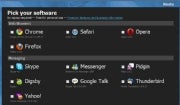 Brave souls upgrading to Windows 7 from XP must do a clean install, a tedious process that includes, among other things, reinstalling all of your apps. Why not load most of your free and open source programs all at once? Ninite does just that. First, go to the Ninite site and pick the programs you want (e.g., Firefox, iTunes, and Skype). Next, download Ninite, which installs the apps on your PC without additional crapware. Ninite is free for personal use.
Brave souls upgrading to Windows 7 from XP must do a clean install, a tedious process that includes, among other things, reinstalling all of your apps. Why not load most of your free and open source programs all at once? Ninite does just that. First, go to the Ninite site and pick the programs you want (e.g., Firefox, iTunes, and Skype). Next, download Ninite, which installs the apps on your PC without additional crapware. Ninite is free for personal use.Windows Live Photo Gallery
 To keep Windows 7 slim and trim -- and avoid the code bloat that slowed Vista -- Microsoft left a few utilities out of its new OS.
To keep Windows 7 slim and trim -- and avoid the code bloat that slowed Vista -- Microsoft left a few utilities out of its new OS.One such app, Photo Gallery, is a free, easy to use photo manager/editor that's worth a download, particularly if you're not already using Google Picasa to organize your pics and videos.
Windows Easy Transfer
Anyone moving to Windows 7 from XP and Vista should check out this free download, which helps you copy files and settings from one PC to another. (Windows 7 comes with Easy Transfer.)
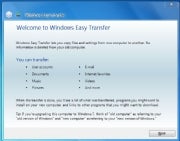 The new version of Easy Transfer adds a file explorer, which simplifies the task of selecting the exact files you want to copy. Easy Transfer won't hang if it comes across a file or setting it can't move. Rather, it'll complete the transfer and provide a report of everything it couldn't copy. The bad news: Easy Transfer won't copy your programs. For a PC-to-PC connection, you'll need an Easy Transfer Cable (about $20). Other transfer options include a USB flash drive, external hard disk, or network connection.
The new version of Easy Transfer adds a file explorer, which simplifies the task of selecting the exact files you want to copy. Easy Transfer won't hang if it comes across a file or setting it can't move. Rather, it'll complete the transfer and provide a report of everything it couldn't copy. The bad news: Easy Transfer won't copy your programs. For a PC-to-PC connection, you'll need an Easy Transfer Cable (about $20). Other transfer options include a USB flash drive, external hard disk, or network connection.Ultimate Windows Tweaker v2
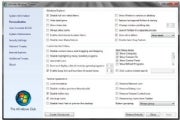 This free customization tool detects whether you're running Windows 7 or Vista, and offers only those tweaks that are relevant to your OS. "Ultimate" is a fitting description for this mega-tweaker, which provide dozens of configuration options for UI, network, security, and system settings. If you're all about personalizing Windows 7, this app's for you.
This free customization tool detects whether you're running Windows 7 or Vista, and offers only those tweaks that are relevant to your OS. "Ultimate" is a fitting description for this mega-tweaker, which provide dozens of configuration options for UI, network, security, and system settings. If you're all about personalizing Windows 7, this app's for you.WinZip 14 Standard
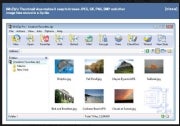 So you're about to ask: If Windows 7 has zip compression built in, why do I need the latest version of WinZip? Well, if you seldom use zip archives, you probably don't. But zip fans will appreciate the improvements in WinZip 14 Standard, which has simplified the process of zipping and mailing archives in Win 7.
So you're about to ask: If Windows 7 has zip compression built in, why do I need the latest version of WinZip? Well, if you seldom use zip archives, you probably don't. But zip fans will appreciate the improvements in WinZip 14 Standard, which has simplified the process of zipping and mailing archives in Win 7.The latest version offers better compression ratios too. WinZip 14 Standard costs $30.
EnhanceMySe7en Free
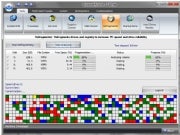 Windows 7 may be easier to use than Vista or XP, but diagnostic and maintenance chores can still be tricky. EnhanceMySe7en is a handy utility for anyone doing a little system housekeeping.
Windows 7 may be easier to use than Vista or XP, but diagnostic and maintenance chores can still be tricky. EnhanceMySe7en is a handy utility for anyone doing a little system housekeeping.This free app makes it easier to select which programs will load when Windows starts, monitor your hard drives' performance, "health," and temperature, and fiddle with the Registry -- if you dare.
Image Resizer Powertoy Clone
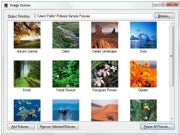 Need to resize pictures in Windows 7? This free utility makes it easy -- simply right-click one or more image files in Windows Explorer. You can select one of four sizes: small (640 by 480); medium (800 by 600); large (1024 by 768); or handheld PC (240 by 320). You can create your own custom sizes too.
Need to resize pictures in Windows 7? This free utility makes it easy -- simply right-click one or more image files in Windows Explorer. You can select one of four sizes: small (640 by 480); medium (800 by 600); large (1024 by 768); or handheld PC (240 by 320). You can create your own custom sizes too.Systerac Tools for Windows 7
 This bundle of 16 tools from Systerac has everything you'll need to keep Windows 7 running smoothly. You can tweak Windows' performance and appearance, optimize memory, clean up the hard drive, cover your tracks by shredding files, and so on. The Systerac interface is aesthetically appealing, nicely organized, and easy to learn. The $20 Windows 7 version runs on Vista too.
This bundle of 16 tools from Systerac has everything you'll need to keep Windows 7 running smoothly. You can tweak Windows' performance and appearance, optimize memory, clean up the hard drive, cover your tracks by shredding files, and so on. The Systerac interface is aesthetically appealing, nicely organized, and easy to learn. The $20 Windows 7 version runs on Vista too.Windows 7 Upgrade Advisor
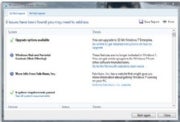 Don't upgrade to Windows 7 before running this free utility from Microsoft. Upgrade Advisor scans your PC to see if it's ready for Win 7. If it detects any potential problems, including insufficient memory, incompatible hardware, or outdated software, it'll let you know in a brief summary report.
Don't upgrade to Windows 7 before running this free utility from Microsoft. Upgrade Advisor scans your PC to see if it's ready for Win 7. If it detects any potential problems, including insufficient memory, incompatible hardware, or outdated software, it'll let you know in a brief summary report.









 (Credit: Graphic by Ina Fried/CNET News)
(Credit: Graphic by Ina Fried/CNET News) 